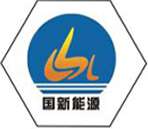
Oct . 05, 2024 06:05
Back to list
electric regulating valve
Understanding Electric Regulating Valves Functionality and Applications
Electric regulating valves are critical components in various industrial processes, especially in systems requiring precise control of flow rates, pressures, and temperatures. These valves play a vital role in maintaining optimal operational efficiency and safety in different sectors, including HVAC, water treatment, and chemical processes. This article delves into the functionality, components, and applications of electric regulating valves, highlighting their significance in modern engineering.
What Are Electric Regulating Valves?
Electric regulating valves are automatic devices used to control the flow of fluids or gases within a system based on specific parameters. Unlike manually operated valves, these models use an electric actuator to open or close the valve in response to signals from a control system. This automation allows for precise regulation of flow, making them ideal for processes that require consistent and reliable performance.
Key Components
1. Valve Body The core structure of the valve, where the fluid or gas flows through. Valve bodies come in various materials and designs depending on the application requirements, including globe, ball, and butterfly types.
2. Electric Actuator This is the heart of the electric regulating valve. It converts electrical energy into mechanical motion, enabling the valve to open or close. Electric actuators can be configured for different operating ranges and speed characteristics, allowing for flexible system integration.
3. Positioner This component ensures accurate positioning of the valve. It receives input from the control system and adjusts the actuator’s position accordingly to achieve the desired flow rate.
4. Sensor Sensors monitor various parameters such as pressure, temperature, or flow rates. The data collected by sensors are sent to the control system, which adjusts the valve’s position via the actuator to maintain desired conditions.
5. Control System The overarching system that processes input from sensors and sends commands to the actuator. Control systems can be simple, relying on manual input, or complex, employing advanced algorithms and feedback loops for fine-tuned regulation.
How Electric Regulating Valves Work
electric regulating valve

Electric regulating valves operate through a closed-loop control system. When a process variable, such as temperature or pressure, deviates from its setpoint, the sensor detects this change and sends a signal to the control system. The control system analyzes the data and determines how much the valve should be adjusted. The command is then relayed to the electric actuator, which moves the valve to the position that will bring the parameter back to its desired range.
This feedback loop allows for real-time adjustments, ensuring that the system operates smoothly and efficiently. Moreover, the ability to integrate these valves into automated control systems enhances operational safety and reduces the risk of human error.
Applications of Electric Regulating Valves
Electric regulating valves are widely used across various industries due to their precision and reliability. Some common applications include
- HVAC Systems In heating, ventilation, and air conditioning systems, electric regulating valves control the flow of air and fluid to maintain desired thermal comfort levels.
- Water Treatment Facilities These valves manage the flow of water and chemicals in treatment processes, ensuring that water quality meets safety standards.
- Chemical Processing In chemical plants, electric regulating valves control the flow of reactants and products, playing a crucial role in maintaining reaction conditions and product quality.
- Oil and Gas Industry In the extraction and transportation of oil and gas, these valves regulate the flow rates in pipelines and processing facilities, preventing leaks and ensuring safety.
Conclusion
Electric regulating valves are indispensable in today’s automated industrial landscape. Their ability to provide accurate flow control contributes to increased efficiency, safety, and reliability in various applications. As technology continues to advance, the integration of smart actuators and advanced control systems will further enhance the capabilities of electric regulating valves, paving the way for more innovative solutions across different industries. Understanding their operation and benefits is essential for engineers and managers looking to optimize their processes and ensure compliant and efficient system performance.
Latest news
-
Safety Valve Spring-Loaded Design Overpressure ProtectionNewsJul.25,2025
-
Precision Voltage Regulator AC5 Accuracy Grade PerformanceNewsJul.25,2025
-
Natural Gas Pressure Regulating Skid Industrial Pipeline ApplicationsNewsJul.25,2025
-
Natural Gas Filter Stainless Steel Mesh Element DesignNewsJul.25,2025
-
Gas Pressure Regulator Valve Direct-Acting Spring-Loaded DesignNewsJul.25,2025
-
Decompression Equipment Multi-Stage Heat Exchange System DesignNewsJul.25,2025

